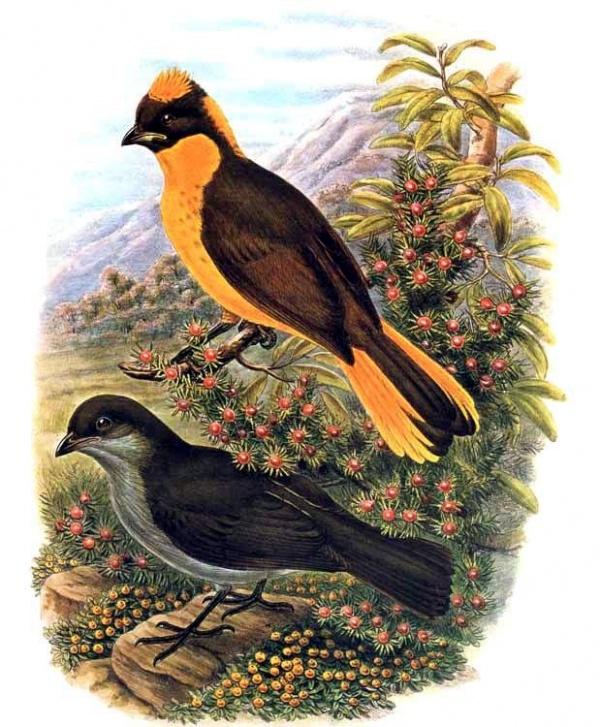Facts About Golden bowerbird
The Golden Bowerbird is a captivating bird indigenous to Queensland, Australia, particularly in the Atherton Tablelands. Belonging to the Ptilonorhynchidae family, this species thrives in rainforests at elevations above 700 meters in northeastern Queensland.
The male Golden Bowerbird is distinguishable by its brown head and wings, contrasted by striking yellow-gold underparts. Females, in contrast, are olive-brown with ash-gray underparts. Juveniles resemble females but have brown eyes. Notably, this species is the smallest among the bowerbirds.
In terms of diet, Golden Bowerbirds predominantly consume fruits but occasionally indulge in insects and spiders. Male bowerbirds are renowned for their unique behavior of constructing and maintaining intricate structures known as bowers. They spend several years perfecting this skill, typically reaching maturity around five or six years of age. During this period, they learn social cues and hone their bower-building abilities.
The breeding season for Golden Bowerbirds generally spans from August to December. Males embellish their bowers and utilize vocalizations to attract females. Females then nest in cup-shaped cavities within tree trunks, laying one or two eggs per clutch. The chicks are fed a diet of fruit and insects and typically fledge by January.
Fortunately, the Golden Bowerbird is currently classified as a species of least concern on the IUCN Red List. Its populations appear stable within its restricted range, rendering it a relatively secure species in the wild.
